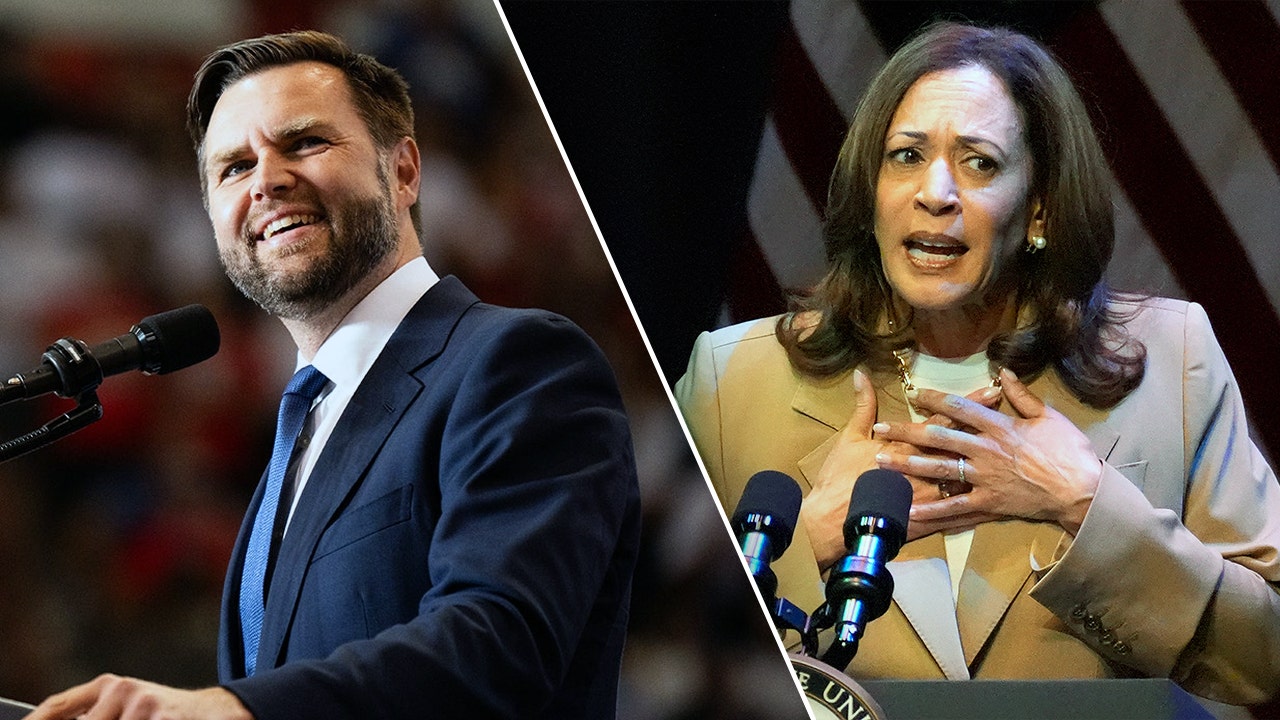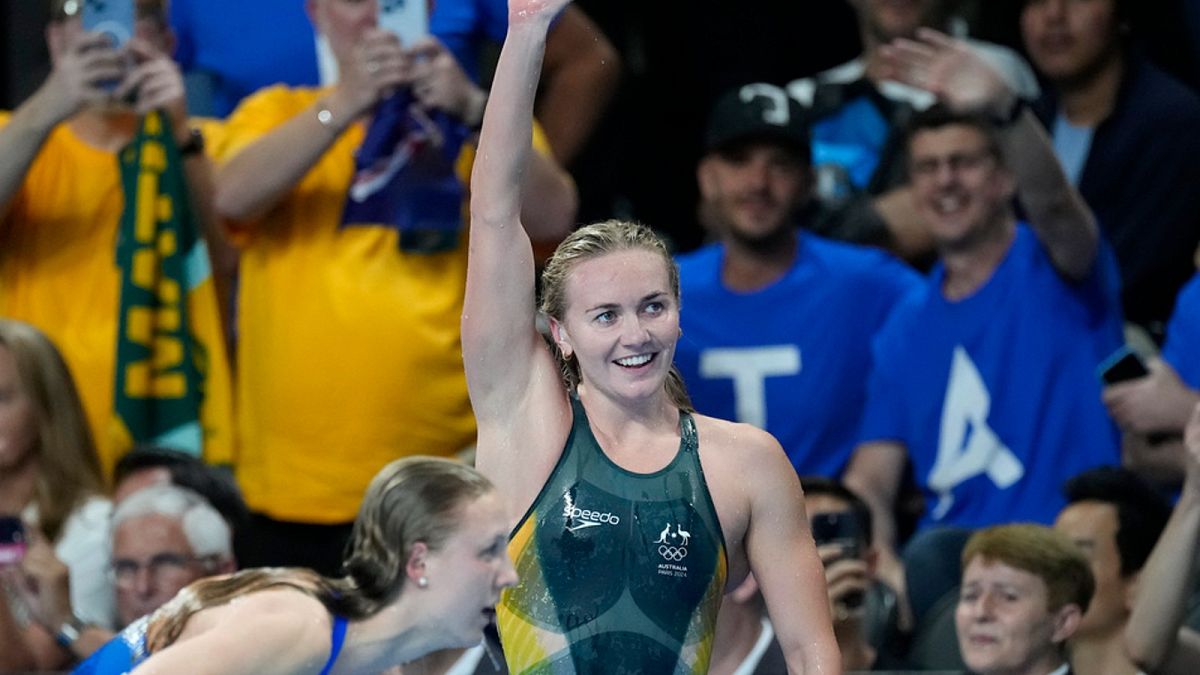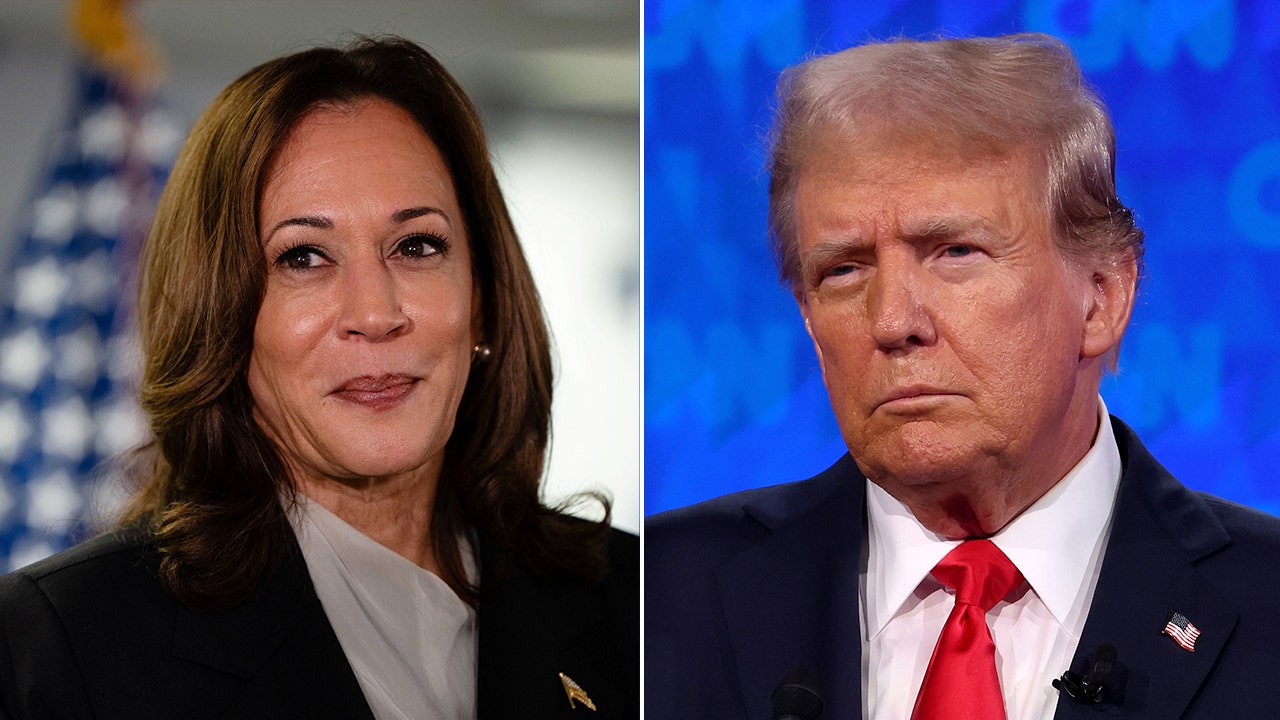Entertainment
Review: 'The Fabulous Four' once again tests the bonds of frenemies in a tropical locale
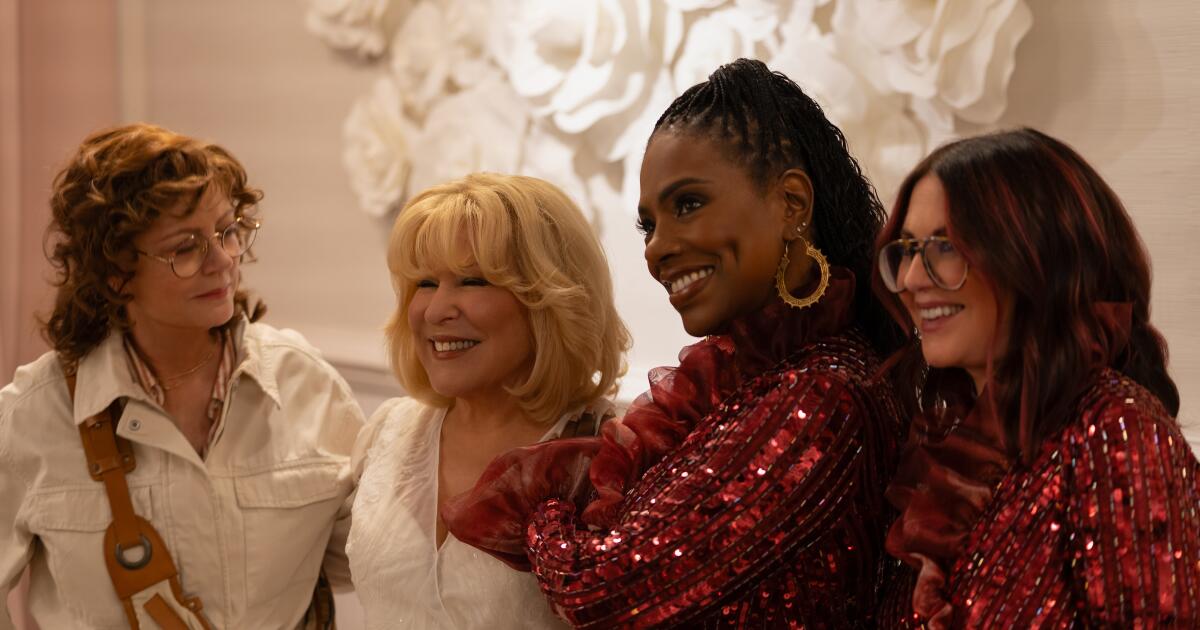
In “The Fabulous Four,” a quartet of female friends in their golden years — played by a powerhouse group of beloved and lauded actors — head out on a vacation, where their longtime relationships and ingrained patterns will be challenged, resulting in cathartic personal growth. Wait a minute, didn’t I review this film two months ago? A year ago? Twice?
It was while reviewing “Summer Camp” back in May that I questioned the robust proliferation of these oh-so-familiar films (four older actresses, one vacation). The concept must be a lucrative one, but the formula isn’t just familiar — it’s cloned. How can they keep getting away with this?
“The Fabulous Four” is only surprising in that Diane Keaton is not in it. Susan Sarandon steps into the Keaton role as Lou, an uptight, career-driven surgeon with a penchant for pantsuits. She’s tricked into a trip by her old pals, the wacky, randy singer Alice (Megan Mullally) and cannabis farmer Kitty (Sheryl Lee Ralph). They want to repair a decades-long rift between Lou and Marilyn (Bette Midler), who used to be best friends until Marilyn snaked Lou’s boyfriend John and married him. Naturally, things have not been the same since then — for good reason, one would argue.
Marilyn is now widowed and has moved to Key West, where she intends to marry her new beau. With promises of six-toed Hemingway cats, Alice and Kitty lure Lou to the Floridian island and then suddenly spring it on her that the trip is in celebration of Marilyn’s wedding. Let the misunderstandings, mishaps and male strippers ensue.
There are also shroom trips, parasailing fiascos and TikTok interludes galore, cluttering up what could have been a rather pathos-rich tale about interpersonal betrayal. Sarandon beautifully sells Lou’s hurt with a palpable sorrow (this is an Oscar-winning actor, after all), but every time the film settles into this core conflict, it scuttles away to something silly, like Lou using a personal pleasure device as a slingshot on the street, or a series of profoundly irritating social media-style interstitials.
There’s also this group of younger, drunken revelers who latch onto the women during the plane ride. They’re there to be the wild, inebriated foil to the straight-laced Lou (a woman wound so tight she never takes off her complex cross-body purse, not even for the closing choreographed dance number), but they also prove to be the only functioning moral compass in the whole film. They blanch in horror at the story of Marilyn stealing Lou’s boyfriend — as they should, but as none of Lou’s friends do. “The Fabulous Four” never justifies why Lou and Marilyn should repair their friendship, just that they used to be friends. Sometimes friendships stay in the past for a reason.
Ralph proves to be a steady supporting presence, despite a confounding subplot concerning her devout Christian daughter and gay grandson. Mullally’s Alice is just there to be a good-time gal and stoner, gobbling gummies and whisking every comely waiter into a closet for a liaison. Midler is game for what her outlandish — and somewhat odious — character gets up to. Bruce Greenwood and Timothy V. Murphy report for duty as the age-appropriate hotties.
Director Jocelyn Moorhouse (“The Dressmaker”) has a long resumé, but she shoots this in the style in which every other one of these films has been filmed: flat, bright and colorful. Savannah, Ga., subs in for Key West, with the island itself captured only in b-roll, so the film doesn’t express the essence of the place.
There’s a version of this film, about this conflict, with the twists and turns that present themselves along the way, that could be quite compelling, and Sarandon’s performance shows us what could be. Which is why it’s so frustrating when it constantly swerves away from anything real. This fearsome foursome may be appealing, but the film is beyond formulaic, and far from fabulous.
Walsh is a Tribune News Service film critic.
‘The Fabulous Four’
Rating: R, for some sexual material, drug use and language
Running time: 1 hour, 39 minutes
Playing: In wide release Friday, July 26

Movie Reviews
Kizumonogatari – Koyomi Vamp: Fantasia Film Review
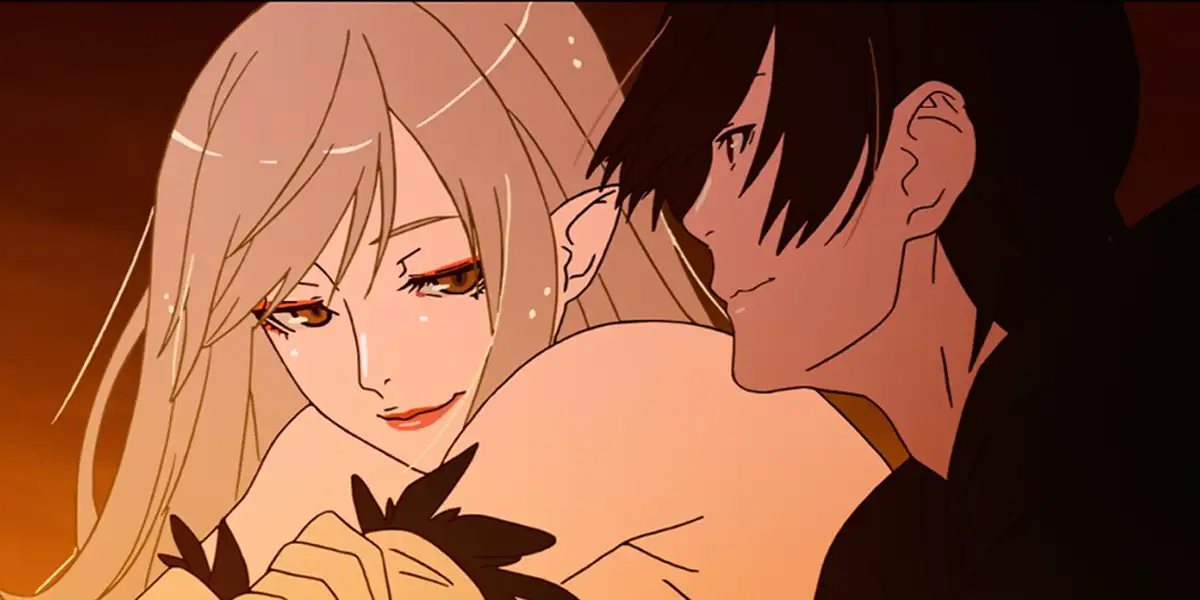
Kizumonogatari – Koyomi Vamp wows with its visuals and impresses with a character-driven story that redefines vampire tropes.
Director: Tatsuya Oishi
Genre: Horror, Anime, Animation, Fantasy, Action
Run Time: 142′
Fantasia Premiere: July 27, 2024
Release Date: TBA
One of the best things about covering film festivals is discovering movies you may not have stumbled across outside of such events. As someone who doesn’t typically seek out anime, I wanted to leave my comfort zone and pick a film to review that wouldn’t usually be on my radar. Plus, I found the premise of Tatsuya Oishi’s Kizumonogatari – Koyomi Vamp to be incredibly alluring.
After all, the lead character, Koyomi (Hiroshi Kamiya), meets a vampire with severed limbs at a train station who pleads for his blood. This will save her life, but in turn, end his. That in itself is enough to make any horror fan curious!
What is so unique about Kizumonogatari – Koyomi Vamp is that this film consists of three previous films (Part 1: Tekketsu, Part 2: Nekketsu, and Part 3: Reiketsu) that have been edited together and condensed into one feature-length story. Though I can’t speak about how many scenes from the standalone movies have been left out of this version, Koyomi Vampdoes a fantastic job of shifting from one scene to the next and finding unique ways to piece them together. Some editing choices may feel jarring to some viewers and disrupt the narrative flow, but the transitions perfectly encapsulate the film’s quirky tone, erratic nature, and eclectic style.
Kizumonogatari – Koyomi Vamp also blends multiple genres (fantasy, action, and horror) skillfully while creating innovative world-building and mesmerizing artistic imagery that showcases the film’s mood and evokes the emotions it wishes the audience to feel. The feature also boasts stunning visuals and action-packed fight sequences that are exhilarating to watch and allow viewers to become completely lost in the spectacle.
If, like me, you’re unfamiliar with any of the previous Kizumonogatari films, some elements of this feature may surprise you, but that is by no means a negative thing. For one, I was taken aback by just how much gore is incorporated into the narrative, so if you enjoy bloody anime horror, there’s plenty here to sink your teeth into. The action-fight sequences also become so outlandish that they are downright hilarious. However, rather than feeling cheap and cartoonish, these scenes fit perfectly into the mythical world of vampires, who can have limbs ripped off, only for them to regenerate moments later.
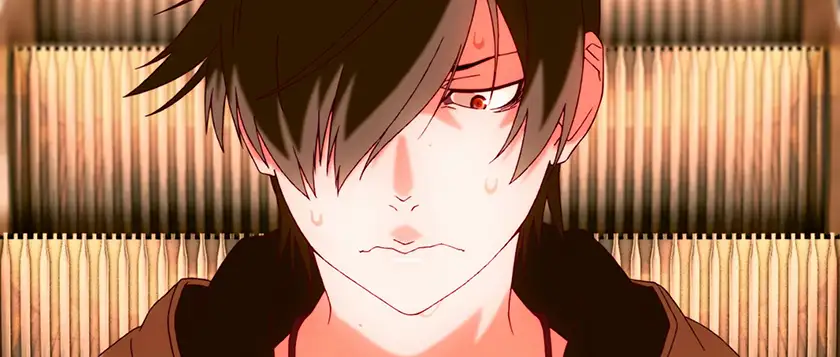
But where Kizumonogatari – Koyomi Vamp excels the most is through its interesting characters and distinctive storyline. Most films centering around vampires paint them as bloodthirsty predators who are a threat to humans and hunt them down to feed. Although those elements are explored in this film, Kizumonogatari – Koyomi Vamp is unique in that it doesn’t fit the typical “vampire who hunts its victim” narrative.
Instead, a shift in power takes place. When Koyomi and the vampire Kiss-Shot first meet, she is weak and desperately needs help. Though Koyomi is human, in that moment, he is the one who holds the cards and has all the power. When our protagonist decides to help the hopeless vampire, he not only shapes Kiss-Shot’s future, but his selfless act of empathy changes his life in a way he’d never have imagined. I really admire the film for starting with such a fresh take on a vampire story and the irony of the situation, as a good deed turns into a living nightmare.
Another highlight of Kizumonogatari – Koyomi Vamp is the feature’s compelling characters, who are engaging and well-developed, particularly Koyomi. He’s extremely likable, making the audience connect with him instantaneously as his kindness and compassion for others shine through. This is most apparent when exploring his friendship with Tsubasa (Yui Horie), as the pair grow close quickly and form trust and a special bond. Their strong desire to protect one another grounds the film and shows viewers glimpses of hope in an otherwise bleak, albeit gripping, narrative. Then we have the evil, mighty Kiss-Shot Acerola-Orion Heart-Under-Blade (her full name, and quite the mouthful), voiced brilliantly by Maaya Sakamoto. As the wicked vampire, she is the best kind of antagonist—manipulative and sinister—yet you can’t help but be intrigued by her backstory while hoping to uncover her hidden agenda.
Though Kizumonogatari – Koyomi Vamp is by no means the sort of film I’d usually look out for, it’s a visually stunning feature with a captivating plot, engaging characters, and noteworthy gore and action sequences. If you’re a fan of the previous Kizumonogatari films, this movie’s smooth narrative consisting of three edited films is sure to impress. If, on the other hand, you’re a newcomer to the anime space, this fantastical action-horror spectacle is a great introduction to the medium to get your feet wet.
Kizumonogatari – Koyomi Vamp premiered at the Fantasia Film Festival on July 27, 2024.
Sister Midnight Review: Unapologetically Wild – Loud And Clear Reviews
The Mumbai-set Sister Midnight is the bold, quirky, often hilarious tale of a young bride who dares to follow her instincts.


Movie Reviews
‘Deadpool & Wolverine’ review: Fun buddy comedy stands apart from MCU

After years of development hell, Ryan Reynolds got his passion project made in the shape of 2016’s Deadpool, in which the Canadian actor played the Merc with a Mouth who likes to break the fourth wall and say something funny and filled with profanity. Released at a time when the superhero movie was thriving, the Tim Miller-directed Deadpool was essentially a parody of the genre, and yet instead of killing it like Blazing Saddles killed the western genre, it only enhanced the superhero boom and Deadpool himself was getting his own franchise. In this current age where the superhero craze might be fading, does Ryan Reynolds once again playing his most iconic role stay relevant?
It has been six years since Deadpool 2 and with the acquisition of 21st Century Fox by Disney, there was a possibility that Deadpool would be integrated with the Marvel Cinematic Universe. Now back with his R-rated attitude intact, the long-awaited Deadpool & Wolverine seems to be about Wade Wilson going through an existential crisis as whether or not his role as the wisecracking mercenary matters. That crisis is put to the test when the Time Variance Authority pulls Deadpool from his quiet life and sets him on a mission to save his universe, partnering with a reluctant Wolverine (Hugh Jackman) from another universe in the process.
Along with the return of Reynolds as Deadpool, you also have the return of Hugh Jackman in arguably his most iconic role; certainly the role that made him a movie star back in 2000, when the first X-Men movie was released and launched the reemergence of superhero movies. After 2017’s Logan, it felt like the perfect send-off for Jackman’s Wolverine and though this movie tries to have its cake and eat it by not attempting to trample the legacy of James Mangold’s brilliant deconstruction film, there is that sense that Jackman can’t seem to let go of the character.
That said, Reynolds and Jackman are a great double act in their title roles, where one is the straight man and the other is the funny guy, and you probably guess which is which. Although Reynolds’ recent career has been about playing roles that are very similar to Wade Wilson, when he is actually playing Deadpool, you are reminded why he was perfectly cast in that role, even if not everyone is on board with his brand of humor.
As for Jackman, finally rocking the “yellow spandex” in Deadpool & Wolverine that we robbed from all those years, he too reminds why he is perfectly cast as Wolverine whose no-bullshit persona is a nice contrast with Reynolds’ carefree performance. It may not reach the heights of Logan, but if Jackman is to retire from this role after this, it would be a good note to end on.
Since Deadpool & Wolverine is built upon the buddy dynamic between its two leads, what is the movie’s place in the MCU? Well, apart from the TVA from the Loki TV series, this doesn’t leave much of an impact with this well-established shared universe and is actually about looking back at the past.
In a similar vein to Spider-Man: No Way Home, the movie is about nostalgia over a particular period of superhero cinema, specifically in this case when Fox produced their own line-up of Marvel movies, not just the X-Men franchise. With this constant look-back at a studio which is personified here like The Statue of Liberty in Planet of the Apes, there is an over-indulgence of cameos, some of which are delightful and others remind you why the Fox era was a rather maligned time.
Directed by Shawn Levy who co-wrote the Deadpool & Wolverine with Reynolds, Rhett Reese, Paul Wernick, and Zeb Wells, the movie tries to achieve a lot and like the two leads, they got lost in the chaos. Amidst the heavy amount of gore and comedy, as well as a tone that is just as flippant as Deadpool himself, the plot is too paper-thin to give the emotional weight, which is about the eponymous leads becoming heroes as a way of redeeming their past mistakes.
As for Emma Corrin who shines as the main villain Cassandra Nova who can literally get under your skin, there aren’t enough scenes with her, considering she has to share some of the villainy with Matthew Macfadyen’s Mr. Paradox; if only Cassandra was a villain in one of the X-Men movies.
Join the AIPT Patreon
Want to take our relationship to the next level? Become a patron today to gain access to exclusive perks, such as:
- ❌ Remove all ads on the website
- 💬 Join our Discord community, where we chat about the latest news and releases from everything we cover on AIPT
- 📗 Access to our monthly book club
- 📦 Get a physical trade paperback shipped to you every month
- 💥 And more!
Entertainment
Review: In 'Great Absence,' a son puzzles out the dad he misunderstood, now fading into dementia

When dementia becomes a principal player in any household, the ravages of loss start early. It’s in that unsettling space, in which confusion grips all parties, where Japanese filmmaker Kei Chika-ura fashions his intricately heartsick “Great Absence,” about a callous father’s dementia and an estranged son’s investigation of the past.
Working from an excellent screenplay (by Chika-ura and Keita Kumano) that’s a finely tuned model of narrative empathy, and boasting an all-timer portrait of decline by the great Tatsuya Fuji (“In the Realm of the Senses”), it conveys both keen insight into a tough situation and, at the same time, intriguingly lets some workings of the heart and mind remain impenetrable.
When Tokyo-based actor Takashi (Mirai Moriyama), upon learning that his retired professor dad Yohji (Fuji) has been involved in a disturbing police incident, travels to his island hometown of Kyushu, it’s more out of a grudging sense of responsibility than some act of love. Because for the most part, Takashi, a child of divorce, has stayed away from his father for decades.
With Takashi’s producer wife Yuki (Yoko Maki) along for support, he facilitates Yohji entering a care facility — which the old man is convinced is a prison in another country — and begins sifting through a home to which Yohji is likely never to return. It’s cluttered with not only the remnants of a long life, including the ham radio set-up that became his abiding obsession, but also scrawled how-to reminders everywhere, like the scene of a crime against memory. There is indeed something to solve, however: the fact that Yohji’s dutiful second wife, Naomi (Hideko Hara), the woman he left Takashi’s mother for all those years ago, has seemingly gone missing.
With the reality-challenged Yohji an obviously unreliable source and Naomi’s embittered adult son (Masaki Miura) from her own prior marriage acting cagey about her whereabouts — Takashi’s dad treated his mom “like a housekeeper,” he spits out — Takashi is left to work out the mystery of Yohji’s and Naomi’s life together himself. But he has a rich resource in a thick diary stuffed with letters. What emerges is a complicated, revelatory love story.
Central to the movie’s gathering power is its time-shifting structure, which folds the recent past into the current story like alternating currents. From the flashbacks, which begin with one of Takashi’s tense visits home, we see a long marriage buckling under the increasingly temperamental Yohji’s worsening state — made utterly vivid by Fuji — and steadfast, smiling Naomi’s flagging endurance, which Hara renders with exquisitely underplayed suffering. Yet in the present day, Takashi, absorbing the diary as if researching a tricky role, gradually becomes unmoored by the discovery of an emotional life in his dad that he never knew about, and certainly never sensed from those times when all he could do was weather his disapproving judgment.
“Great Absence,” which nods just enough to its pandemic time frame to imbue an extra tinge of isolating sadness, is as painfully acute as any movie in depicting an aging society’s impact on the next generation. That includes the stark difference in partnerships between Yohji’s and Naomi’s patriarchal marriage, and the more equitable arrangement Takashi and Yuki share, but also in the ripple effects of a difficult man suddenly needing his own help. In its patient but coiled atmosphere and pleasurably firm plotting, Chika-ura has made something novelistic about one man’s dissipating sense of self. But as he disappears, he finds unlikely purchase in his distant son’s consciousness. It makes “Great Absence” a beguiling and touching transference of understanding across time and memory.
‘Great Absence’
Not rated
In Japanese, with subtitles
Running time: 2 hours, 13 minutes
Playing: Opens Friday, July 26 at Laemmle Monica Film Center, Laemmle Glendale
-

 Midwest1 week ago
Midwest1 week agoMichigan rep posts video response to Stephen Colbert's joke about his RNC speech: 'Touché'
-

 News1 week ago
News1 week agoVideo: Young Republicans on Why Their Party Isn’t Reaching Gen Z (And What They Can Do About It)
-

 News1 week ago
News1 week agoRNC speakers want to separate the president from the person to show softer side of Trump
-

 Politics1 week ago
Politics1 week agoFox News Politics: The Call is Coming from Inside the House
-

 News1 week ago
News1 week agoVideo: J.D. Vance Accepts Vice-Presidential Nomination
-

 World1 week ago
World1 week agoCivilians try to pick up daily life in Ukraine's East
-

 Movie Reviews1 week ago
Movie Reviews1 week agoFilm Review: 'Oddity' is a Little Chiller That Shows a Lot of Atmospheric Promise – Awards Radar
-

 World1 week ago
World1 week agoTrump to take RNC stage for first speech since assassination attempt













